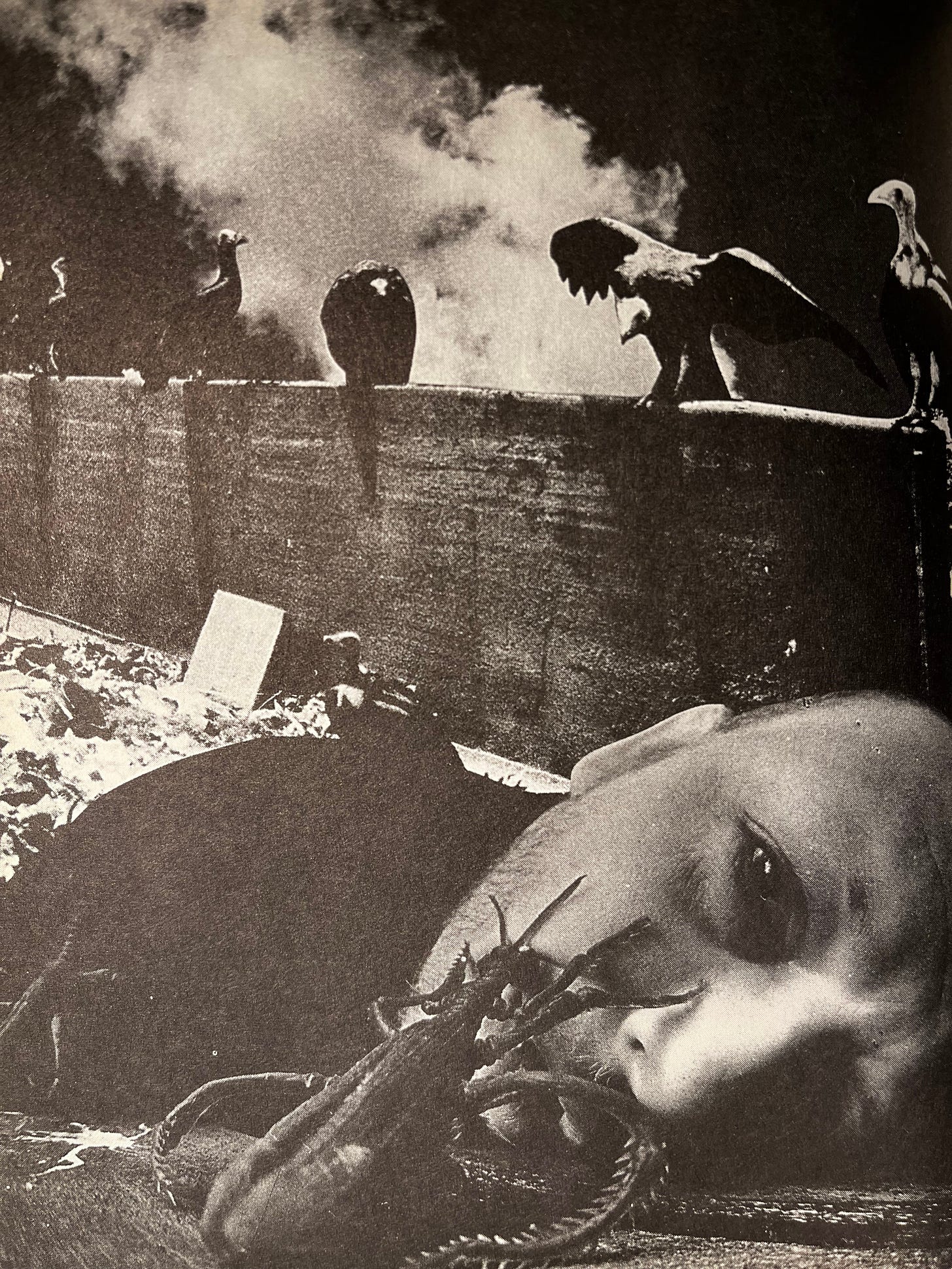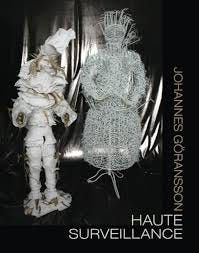The Frenzy of the Visible: On Images in Poetry
I recently wrote a “note” about recent art exhibitions in Russia and India of art made in response to Aase Berg’s sci-fi epic Dark Matter (and its various translations), and how that book is profoundly visual to begin with, seeming to elicit the Tom Benson collages that were part of the original Swedish edition.
But the poetry itself is intensively visual, an anarchic, volatile montage of images that surround, immerse and penetrate:
We stood on deck in silent clusters. a twilight fell slowly and
the fever surged in a wave through my pseudo-dead body. Out
of my throat rose a sap that tasted of yeast and bitter almond.
He bent into the kiss and sucked up the fat liquid with his sticky
feeler. A moon-flecked chrysalis anemone dropped from his already
extremely corroded Dead Man’s Hand. Tentacles, very long,
hanging: where heavy breast-blue lilies drooped over the lacunae.
What happens in this extremely visual space is that the body becomes unstable. Starts to grow in weird ways. Becomes “hummingbirdish.” Grows tentacles. The montage keeps the poems moving; we are never allowed to settle on one stable “image”, we are constantly moving to the next thing. The excessive visuality produces mutations - of bodies and language. The human sexes are transformed. Men and women are transformed. Become snails, birds, stuff.
*
The visual has a very important role in modern and contemporary US poetry rhetoric. On one hand workshop pedagogy tells us to “show, don’t tell” and “no ideas but in things.” But then workshop pedagogy, traditionally focused on restraint and decorum, also tells us that we have “earn” images. In other words, we have to include images but we have to use them economically, restrained, we cannot let them ruin the “restricted economy” of contemporary taste. The image is a luxury. The image is an important site for the control of poetry, but also a potentially wasteful, currency-wrecking, destabilizing mode. The image has to be controlled, disciplined.
The title of this post comes from Linda Williams’ famous book on pornography. It seems art is constantly accused of being pornographic even when it has nothing to do with sex (see “ruin porn” or Sontag dissing war photography). The visual has to be disciplined or it becomes “too much,” potentially immoral.
*
One touchstone for my thinking about poetry is how Publishers Weekly once referred to my book Haute Surveillance as a “morass of pornography” and - rather than its normally pretty bland descriptive mode - went over the top in castigating and warning people about the book. The imagery veered out of good taste - became immersive, which itself is a figure of tastelessness - so the industry standard had to “censor” it.
From Haute Surveillance:
… My wife’s body is swollen from scorpions. She will soon give birth to a fetus. I know the path to Joy is littered with bodies and cameras.
As in Sontag’s defense (early Sontag) of “the pornographic imagination,” the imagery of the book is not redeemed by a sense of meaning-as-currency. The book is inflationary, the bodies not properly “paid for” by a proper sense of interiority.
*
Compare “the frenzy of the visible” to the most common praise - “accessible.” In one, we are excited by the visual - our bodies are affected, something is “done to” our bodies - and in other we “access” some idea behind the visual images, we access “the currency” of meaning”. That is, in one model, our bodies drive us out of control, in the other we - the reader - is in control, we access, we keep our books balanced.
I’m reminded of one of my favorite text about the movies, Steven Shaviro’s The Cinematic Body, which pushes back against the notion of the “gaze” of the moviegoer as being in control. Here’s how Shaviro describes Kathryn Bigelow’s Blue Steel (a fun movie!):
“Visual fascination is a passive, irresistible compulsion, and not an assertion of the active mastery of the gaze. And it is linked with the delegitimation of violence, its dissocation either from the demands of social order or from the assertion of virile (stereotypically male) power and control, for Eugene “catches” violence as one catches an infection, more than he inflicts it as a willful expression of a warped self. His Phallic, aggressive fantasies are decentered and unhinged in the very movement by which they are intensified. he is less an independent character than a hysterical figuration of the destabilizing excessiveness of Turner’s own desire. And Blue Steel as a whole celebrates this excess.”
The poem of excessive visuality is not a poem that is “inaccessible”, it’s a poem that accesses me as a reader. It’s a poem where notions of control and individuality are unsettled, gender is corrupted. Things “catch” rather than are properly communicated, properly exchanged. The currency of proper interiority is made worthless. The economy of the art exchange is ruined.
This is why in so much establishment writing about poetry and pedagogy, images both must be used and must be paid for. The image has to be disciplined. Failure to properly restrain images result in a loss of interiority, loss of economic balance, control.
*
There is a mystical angle to this. I think of Eva Kristina Olsson’s The Angelgreen Sacrament, where the very letters are printed in green. There’s something fundamentally synesthesiac about her book: the visual is so intense it starts to behave like sound, like a dress, like a dream. The visual pushes against the boundaries of visual print culture. McLuhan and Ong. But more about this next time.





